When we think of tropical beauty, few plants capture the imagination like the **Hibiscus rosa-sinensis**, known as Gurhal (गुड़हल) in Hindi. With its flamboyant, trumpet-shaped blooms in shades of red, pink, yellow, and orange, this plant isn’t just a garden favorite—it’s a cultural icon, a MEDICINAL POWERHOUSE, and an ecological ally. Let’s dive into the fascinating story of this “Rose of China,” exploring its secrets, uses ( especiallyforstopping HAIR LOSS) and why it’s cherished worldwide.
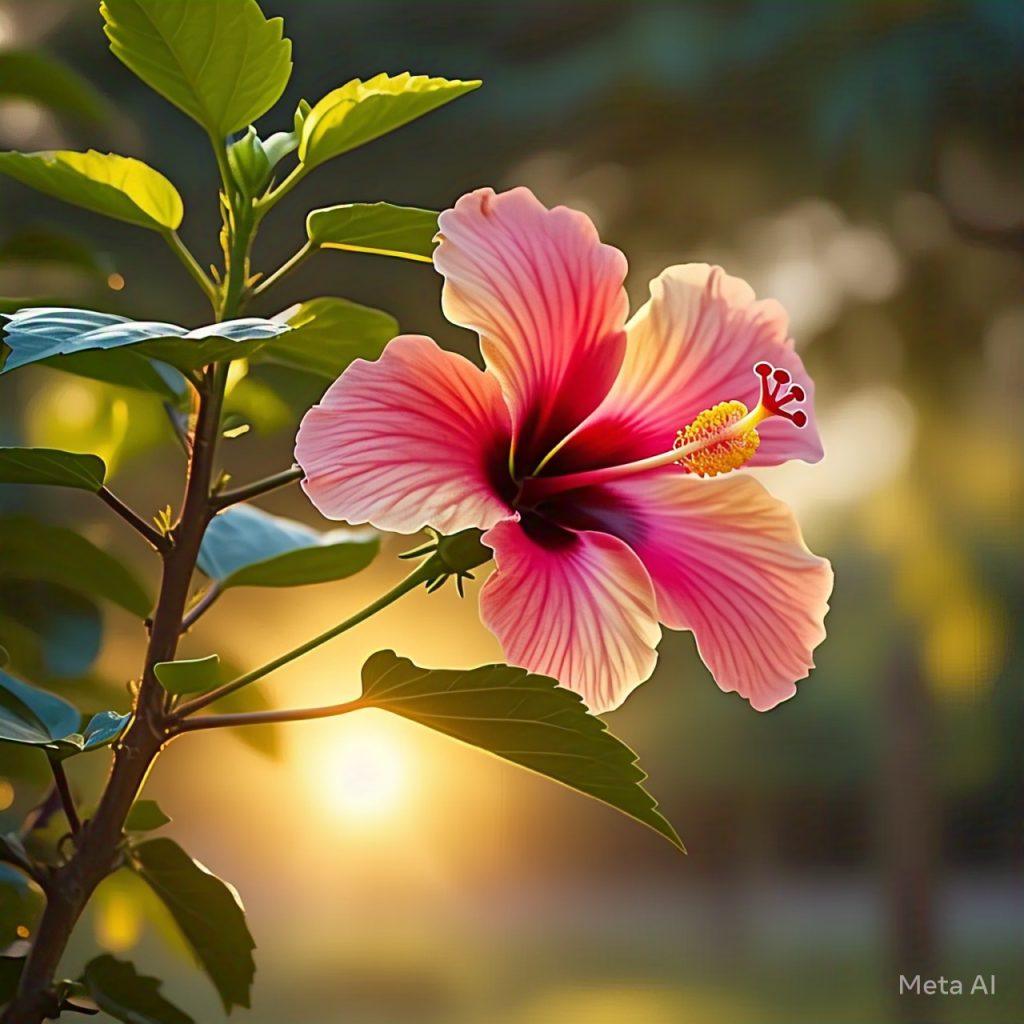
### **Botanical Profile: The Anatomy of Beauty**
**Scientific Name:** Hibiscus rosa-sinensis
**Family:** Malvaceae (the mallow family)
**Native Range:** Though its name suggests Chinese origins (*rosa-sinensis* means “Chinese rose”), its exact origins are debated. Today, it thrives in tropical and subtropical regions worldwide.
**Physical Traits:**
– **Flowers:** The star attraction! Blooms can reach 4–6 inches in diameter, with five overlapping petals and a prominent central stamen. Colors range from classic red to hybrids in purple, white, and even multicolored varieties.
– **Leaves:** Glossy, dark green, and ovate with serrated edges.
– **Growth Habit:** A perennial shrub that can grow up to 15 feet tall in ideal conditions, though most garden varieties stay compact (3–6 feet).
**Fun Fact:** Hibiscus flowers are **ephemeral**—each bloom lasts just 1–2 days. But don’t worry; the plant produces new flowers continuously during its blooming season! After all lots of flowers are needed to sustain our hair health and stop hair loss.
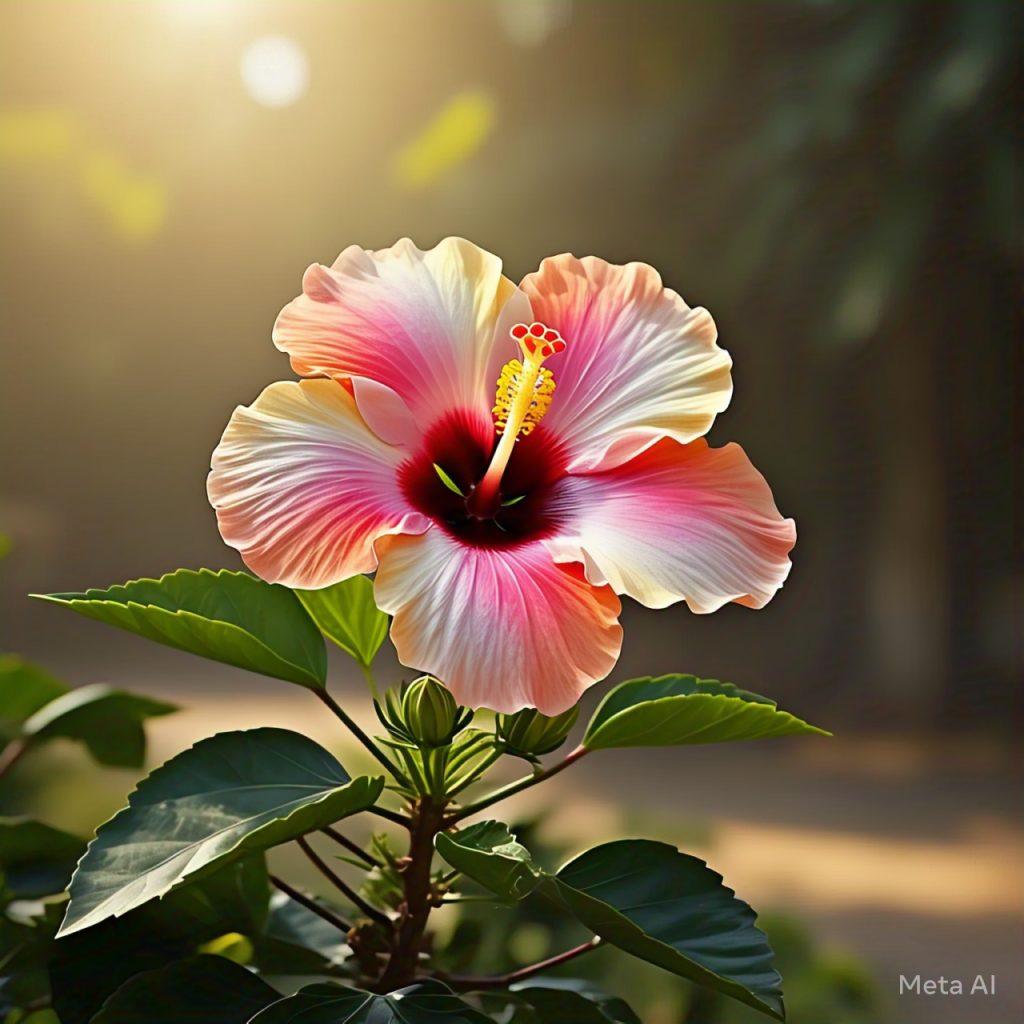
### **Cultural Significance: A Flower of Many Stories**
The hibiscus isn’t just eye candy; it’s steeped in symbolism and tradition:
– **Hindu Rituals:** In India, the red hibiscus is sacred to Goddess Kali and Lord Ganesha, often used in offerings to symbolize divine feminine energy.
– **Hawaiian Identity:** Known as *pua aloalo*, it’s Hawaii’s state flower, representing delicate beauty and hospitality.
– **National Pride:** Malaysia and South Korea have adopted specific hibiscus varieties as national symbols (the *Bunga Raya* and *Mugunghwa*, respectively).
**Myth Buster:** Despite its association with love and celebration, some cultures historically linked hibiscus to misfortune. In the Victorian language of flowers, it symbolized “delicate beauty”—a nod to its short-lived blooms.
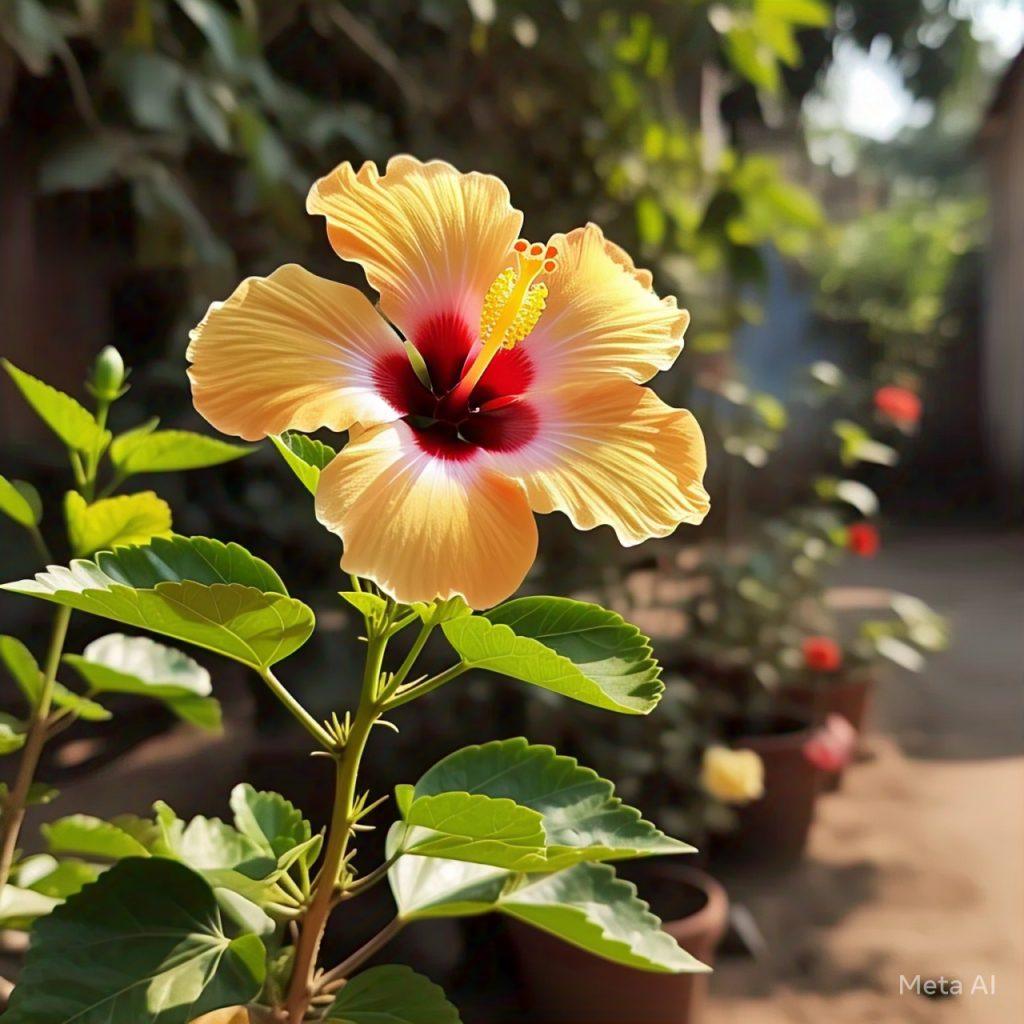
### **Ayurvedic Wisdom: Hibiscus as a Healing Herb**
In Ayurveda, Hibiscus rosa-sinensis, or **जापा** (Japa), is revered as a **Rasayana** (rejuvenating herb) with versatile therapeutic properties. Ancient texts like the **Charaka Samhita**, **Sushruta Samhita**, and **Bhavaprakasha Nighantu** detail its use for balancing *Pitta* and *Kapha* doshas while cautioning against excessive use for *Vata*-dominant individuals due to its cooling nature.
#### **Key Ayurvedic Uses & Formulations:**
1. **Hair Health (Keshya):**
– **Preparation:** A paste of crushed hibiscus leaves and flowers is applied to the scalp to prevent premature greying, strengthen roots, and treat dandruff. Mixed with coconut oil, it’s boiled to create **Japa Taila**, a nourishing hair oil.
– **Text Reference:** The **Ashtanga Hridaya** (Uttara Tantra 23:12) recommends hibiscus for hair growth and shine.
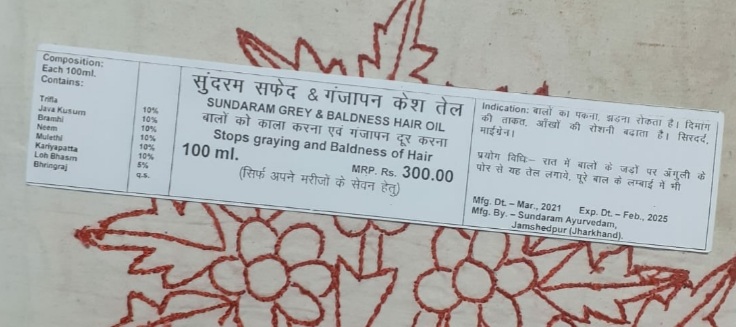
2. **Women’s Health:**
– Hibiscus flowers are used to regulate menstrual cycles and alleviate heavy bleeding (*Rakta Pitta*). A decoction made with dried petals is consumed to balance hormones.
– **Text Reference:** The **Dhanvantari Nighantu** classifies hibiscus as a *Stanyashodhana* (blood purifier) and *Artavajanana* (menstrual flow regulator).
3. **Cardiovascular Support:**
– Rich in antioxidants like flavonoids, hibiscus tea is prescribed to strengthen the heart (*Hridya*) and manage hypertension.
– **Modern Validation:** A 2015 study in the *Journal of Ethnopharmacology* found hibiscus extract effective in reducing cholesterol levels in rats, aligning with Ayurvedic claims.
4. **Skin Care:**
– Its anti-inflammatory properties help treat acne and burns. A paste of hibiscus petals with honey is applied to soothe irritated skin.
**Ayurvedic Insight:** According to the **Bhavaprakasha Nighantu**, hibiscus flowers are *Kashaya* (astringent) and *Madhura* (sweet) in taste, making them ideal for cooling the body and detoxifying the blood.
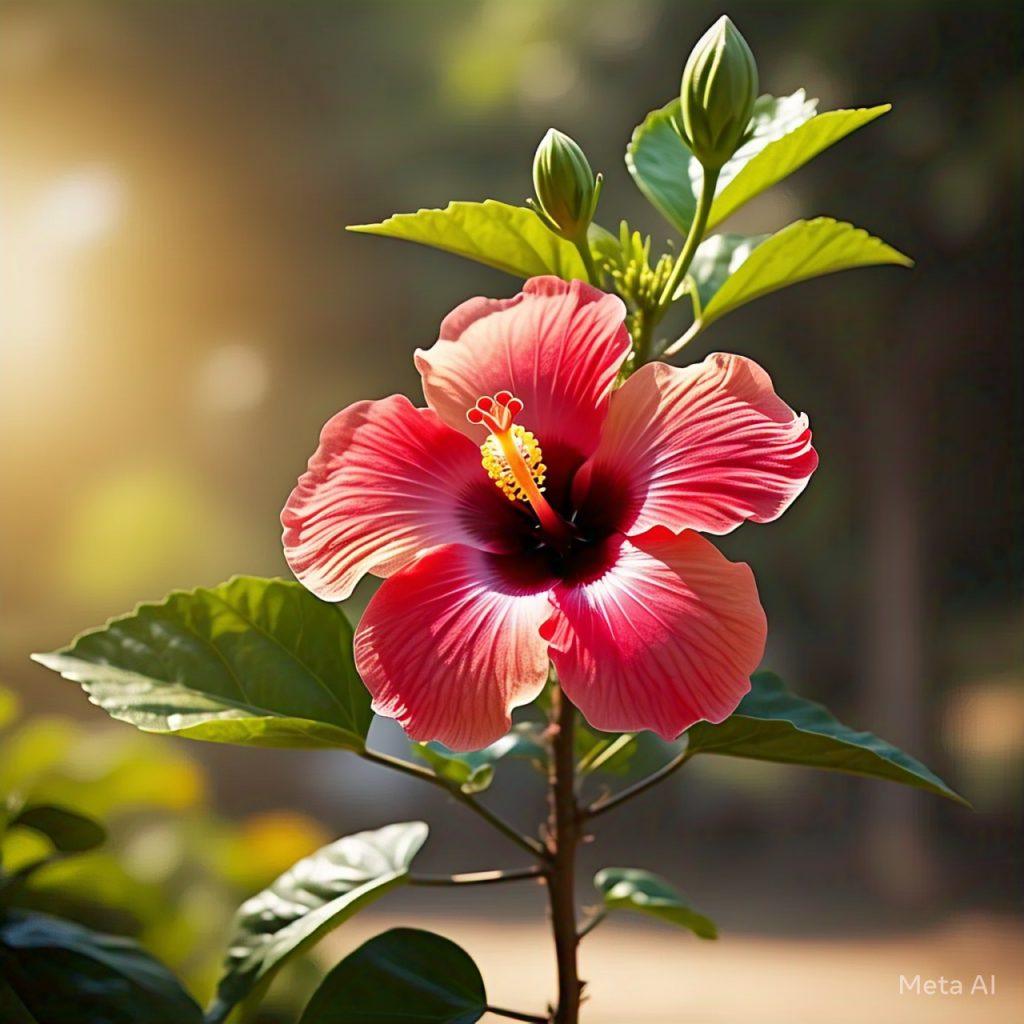
### **Medicinal and Practical Uses: Nature’s Pharmacy**
Beyond Ayurveda, hibiscus has been a staple in global traditional medicine:
– **Heart Health:** Studies, including a 2010 review in the *Journal of Nutrition*, highlight hibiscus tea’s ability to lower blood pressure due to its antioxidants and bioactive compounds like anthocyanins.
– **Immunity Boost:** Rich in vitamin C, it’s brewed into teas to combat colds and fatigue. In Egypt, *karkadé* (hibiscus tea) is a popular refreshment.
– **Modern Research:** Researchers at the University of Queensland are exploring hibiscus compounds for potential anti-cancer properties, though studies are still in early stages.
### **Gardening : How to Grow Your Own Hibiscus**
Want to add tropical flair to your garden? Here’s how:
– **Climate:** Thrives in USDA zones 9–11. In cooler regions, grow it in pots and bring indoors during winter.
– **Sunlight:** At least 6 hours of direct sun daily.
– **Soil:** Well-draining, slightly acidic soil (pH 6.0–7.0).
– **Watering:** Keep soil moist but not waterlogged. Reduce watering in winter.
– **Pests:** Watch for aphids and spider mites. Neem oil is a gardener’s best friend!
**Pro Tip:** Prune in early spring to encourage bushier growth and more blooms.
### **Environmental Impact: A Friend to Pollinators**
Hibiscus isn’t just for humans—it’s a lifeline for ecosystems:
– **Pollinator Magnet:** Its nectar-rich flowers attract bees, butterflies, and hummingbirds. In urban areas, it supports biodiversity by providing food in concrete jungles.
– **Air Purifier:** Like many plants, it helps absorb pollutants like formaldehyde, making it a great indoor air cleaner.
**Case Study:** A 2019 project in Mumbai found that neighborhoods with hibiscus plants saw increased visits from pollinators compared to areas with non-flowering shrubs.
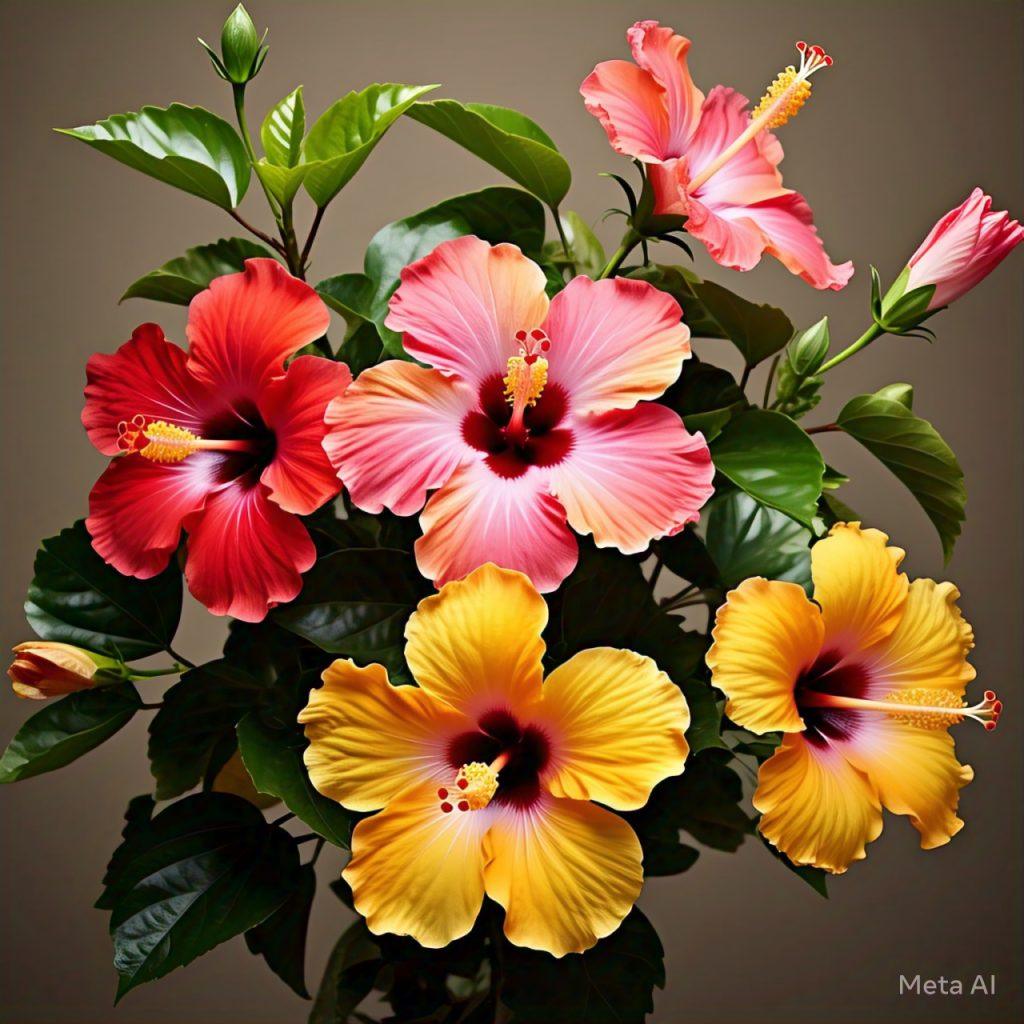
### **Debunking Myths and Embracing Facts**
**Myth:** Hibiscus tea is made from Hibiscus rosa-sinensis.
**Truth:** Most commercial hibiscus tea uses *Hibiscus sabdariffa* (roselle), but *rosa-sinensis* petals are also edible and used in herbal blends.
– **Myth:** All hibiscus plants are the same.
**Truth:** There are over 300 hibiscus species, each with unique traits. *Rosa-sinensis* is prized for ornamentation, while others like *sabdariffa* are grown for food.
### **Conclusion: Why Hibiscus Deserves a Spot in Your Life**
From temple offerings to teacups, Hibiscus rosa-sinensis bridges nature, culture, and wellness. Whether you’re a gardener seeking color, a health enthusiast exploring herbal remedies, or simply someone who appreciates beauty, this plant offers something for everyone. So next time you spot its vivid blooms, remember—you’re looking at a global citizen with roots in history and a role in our future.
**Why not start today?** Plant a hibiscus, brew a cup of tea, or simply pause to admire its fleeting blossoms. After all, as the hibiscus teaches us, beauty often lies in the moment. 🌺
### **References from Ayurvedic Texts**
1. **Charaka Samhita:** Mentions hibiscus as a cooling herb for blood-related disorders.
2. **Sushruta Samhita:** Recommends hibiscus in wound healing and hair treatments.
3. **Ashtanga Hridaya (Uttara Tantra):** Highlights its role in promoting hair health.
4. **Bhavaprakasha Nighantu:** Classifies hibiscus as a *Rasayana* and details its medicinal properties.
5. **Dhanvantari Nighantu:** Describes its use in menstrual health and detoxification.
*Note: Always consult an Ayurvedic practitioner before using hibiscus for therapeutic purposes.*
###**Some Valuable Articles :
- Hairloss: Causes, Treatments and Prevention Options by Cleveland Clinic – https://bit.ly/4l8VLiR
- Hair Loss – Symptoms and Causes by Mayo Clinic – https://bit.ly/4nsIHXr